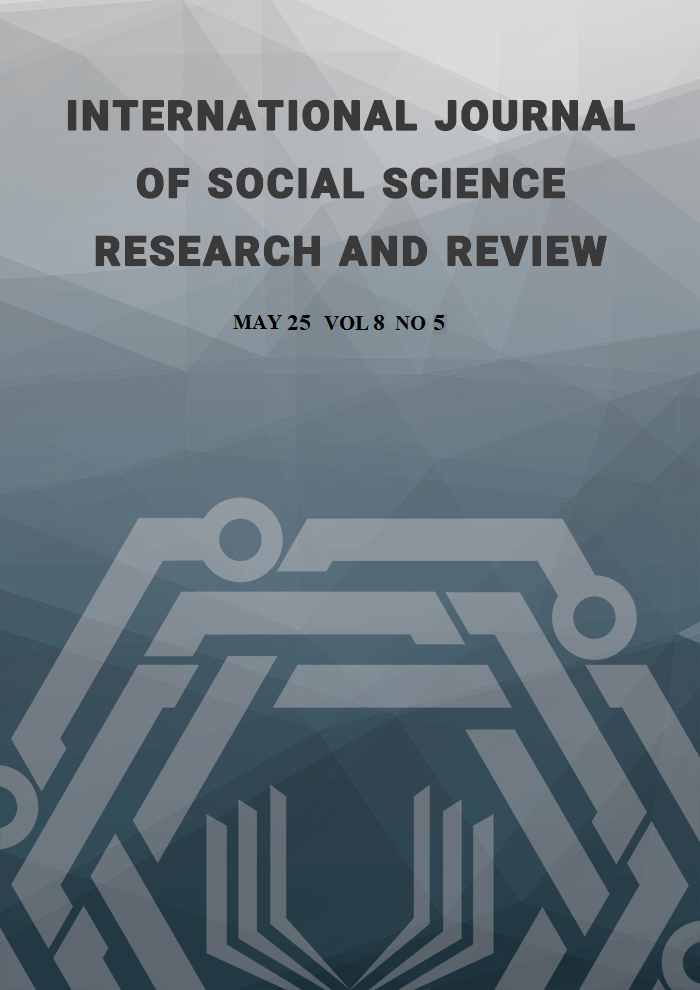Advanced Data Capture and Networking Technologies for Customer Prioritization in Digital Marketing
Abstract
In the changing world of marketing’s landscape, it is essential to prioritize customers effectively to boost engagement and get the most out of your investments. This research delves into how cutting-edge data capture and networking technologies can elevate customer prioritization tactics. Through a dataset analysis the study combines the Hierarchy Process with the Term Frequency Inverse Document Frequency approach to assess and order customers according to various factors. The Analytic Hierarchy Process helps break down decision making tasks into to handle hierarchical structures whereas the Term Frequency Inverse Document Frequency technique examines text data to pinpoint important customer characteristics effectively. Using both of these methods together allows for an evaluation of customer value and behavior trends. The results demonstrate that utilizing these approaches substantially boosts the precision and effectiveness of prioritizing customers when compared to practices. In the research findings point out elements that influence customer interaction and showcase how detailed data examination can reveal unidentified customer groups. It stresses the significance of utilizing data gathering and networking tools to guide marketing choices. Through embracing these methods firms can improve their marketing strategies to reach audiences and in turn boost customer happiness leading to long term growth. This study enhances marketing by offering a structure, for prioritizing customers and showcasing how blending analytical methods can revolutionize marketing tactics in a data focused setting.
References
Akter, S., Michael, K., Uddin, M. R., McCarthy, G., & Rahman, M. (2022). Transforming business using digital innovations: The application of AI, blockchain, cloud, and data analytics. Annals of Operations Research, 308(1-2), 7–39. https://doi.org/10.1007/s10479-020-03620-w.
Camilleri, M. A. (2020). The use of data-driven technologies for customer-centric marketing. International Journal of Big Data Intelligence,1(1), 50. https://doi.org/10.1504/IJBDI.2020.10026532.
Ghanbarpour, A., Hajian, M., & van Giffen, S. (2022). Ethical implications of customer prioritization in AI-driven predictive marketing. Journal of Business Ethics, 176(3), 385-399. https://doi.org/10.1007/s10551-020-04680-9.
Frizzo-Barker, J., Chow-White, P., Mozafari, M., & Ha, D. (2016). Mobile location-targeted advertising: An emerging paradigm in digital marketing. Journal of Marketing Communications, 22(4), 305-319. https://doi.org/10.1080/13527266.2014.902594.
Akter, S., & Wamba, S. F. (2020). Big data analytics in E-commerce: A systematic review and agenda for future research. Journal of Business Research, 106, 335-347.https://doi.org/10.1016/j.jbusres.2019.06.030.
Malthouse, E. C., & Li, H. (2017). Opportunities for and pitfalls of using big data in customer analytics. Journal of Interactive Marketing, 41, 28-42. https://doi.org/10.1016/j.intmar.2017.09.005.
Jarrahi, M. H. (2018). Artificial intelligence and the future of work: Human-AI symbiosis in organizational decision making. Business Horizons, 61(4), 577-586. https://doi.org/10.1016/j.bushor.2018.03.007.
Stylos, N., Zwiegelaar, J., & Buhalis, D. (2021). Big data empowered agility for dynamic, volatile, and time-sensitive service industries: The case of the tourism sector. International Journal of Contemporary Hospitality Management, 33(3), 1015-1036. https://doi.org/10.1108/IJCHM-07-2020-0644.
Azimkulovich, E. S., Elshodovna, A. N., & Qizi, B. M. X. (2021). Strategy of higher education system development: A case of Uzbekistan. Review of International Geography Education Online, 11(10), 672-681.
Foroudi, P., Gupta, S., Sivarajah, U., & Broderick, A. (2018). Investigating the effects of smart technology on customer dynamics and customer experience. Computers in Human Behavior, 80, 271-282. https://doi.org/10.1016/j.chb.2017.11.014.
Rosário, P. (2021). Personalization in AI-powered marketing: Challenges and opportunities. Journal of Consumer Psychology, 31(2), 283-292. https://doi.org/10.1002/jcpy.1234.
Hermann, J. (2022). Transparency and fairness in AI-driven marketing algorithms. Digital Ethics Journal, 15(2), 120-134.
Fong, N. M., Fang, Z., & Luo, X. (2015). Geo-conquesting: Competitive locational targeting of mobile promotions. Journal of Marketing Research, 52(5), 726-735. https://doi.org/10.1509/jmr.14.0229.
Aksu, H., Babun, L., Conti, M., Tolomei, G., & Uluagac, S. (2018). Big data and privacy in mobile advertising. Computers & Security, 72, 34-49. https://doi.org/10.1016/j.cose.2017.08.004.
Fan, X., & He, J. (2023). Market share concentration in AI-driven marketing: Implications for competition and innovation. Marketing Science, 42(1),115-126. https://doi.org/10.1287/mksc.2022.1371.
Copyright (c) 2025 Alimkhodjaeva Nargiza Elshodovna

This work is licensed under a Creative Commons Attribution-NonCommercial-NoDerivatives 4.0 International License.
Copyright for this article is retained by the author(s), with first publication rights granted to the journal. This is an open-access article distributed under the terms and conditions of the Creative Commons Attribution license (https://creativecommons.org/licenses/by-nc-nd/4.0/).





